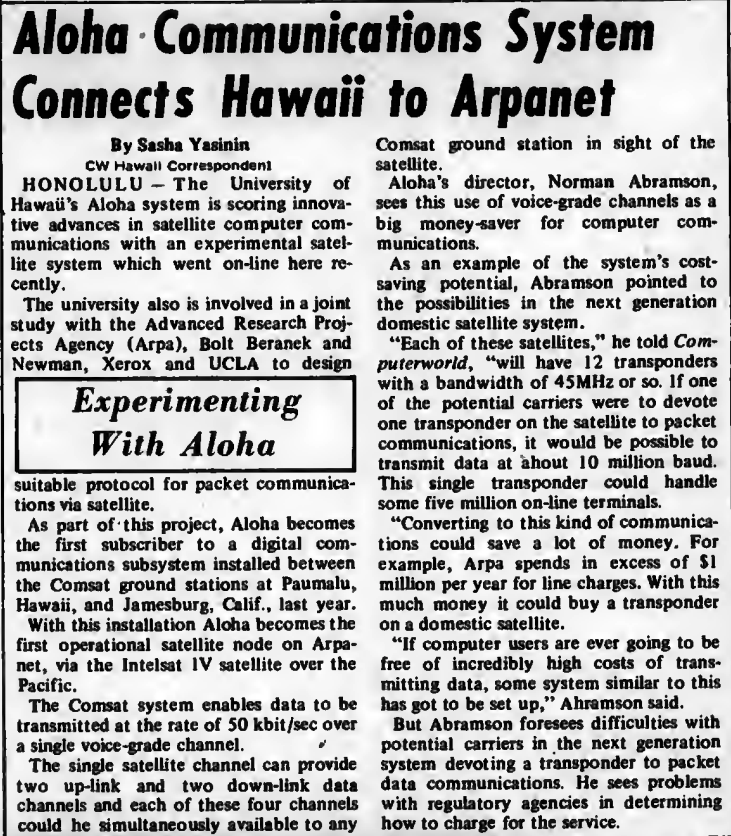April 11, 1973: Hawaii’s ALOHAnet system becomes the first satellite connection on ARPANET
A wireless communication network developed in Hawaii becomes connected via satellite to an early version of the internet.

The Advanced Research Projects Agency Network, or ARPANET for short, was a technological innovation of the late 1960s that would plant the seed for the modern internet. It was the first system to share data with “packet-switching,” a method of grouping data into chunks before it is transmitted. In 1973, only around 40 computers were connected to ARPANET, largely belonging to universities, government agencies, and private tech companies. As of 2018, there are over 22 billion devices now connected to the internet around the globe, largely consisting of private citizens.
In April 1973, Computerworld magazine featured an article about the University of Hawaii becoming the first to connect to ARPANET via satellite. Led by scientist Normal Abramson, a team of researchers at the University of Hawaii had developed a wireless computer network called ALOHAnet. In contrast, ARPANET was a wired network. According to the Computer History Museum, any “modern form of wireless data networking, from WiFi to your cellphone, goes back to the ALOHAnet.” While the ALOHAnet on its own was a revolutionary invention, the connection of ALOHAnet to ARPANET via satellite is considered by many to be even more meaningful by signifying the birth of the modern wireless internet.
Satellite connections would become a central part of later additions to the internet. In an interview with Computerworld, Abramson correctly predicted that “converting to [satellite] communications could save a lot of money” compared to wired connections. Additional satellite connections to ARPANET were soon made internationally, truly establishing the World Wide Web. ARPANET would be formally discontinued in 1990, just as the modern internet began to grow.
–By Kathleen Esfahany